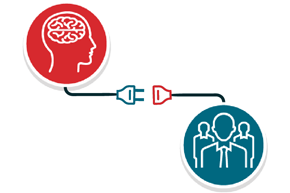Rising healthcare costs in the United States have caused government, corporate, and association leaders to look for ways to make our healthcare system more efficient. Insurance provider and Affordable Care Act plans both provide for preventative care in order to keep long term costs down for the patient and the insurer. With Americans spending an average of $898 per year on pharmaceuticals[1], prescription drugs have been targeted by managed care groups as an area where costs can be cut. However, an increasing trend in the industry is starting to emerge that might actually increase the dollar amount that insurers and patients pay out to the pharmaceutical industry while saving them money in the long term. The development of preventative pharmaceuticals, which are designed to help mitigate the risk of needing to treat a condition in the future, is offering pharma companies a new avenue for growth while improving the quality of patient care.

From the perspective of patients, preventative medicine can be very appealing because it helps keep money in their pockets while helping to maintain their health. A good example to illustrate this is flu vaccines, which are relatively inexpensive and are completely covered by some health insurance plans. This annual shot can prevent patients from having to spend thousands of dollars on a trip to the hospital to treat the flu, and insurance providers would much rather pay for several vaccines than a hospital visit.
There are a number of challenges that industry leaders face in developing and marketing preventative medicines, but their potential to improve health care for patients and their business opportunity is too appealing to ignore. With a number of blockbusters dropping off of the patent cliff and stricter novel drug requirements from the FDA, preventative pharmaceuticals offer a wide range of opportunities for manufacturers that many of their peers have failed to identify. Drugs used to treat conditions will always be necessary, but treatment drug markets have become increasingly saturated and competitive.
The largest hurdle that manufacturers will face in marketing preventative pharmaceuticals is patient adherence, which has continued to be a challenge for the industry. Vaccines that need to be administered once per year boast much stronger adherence rates than prescriptions that need to be frequently refilled. The length of patient adherence for pharmaceuticals tends to stay around an average of 6 months, and it is not uncommon for patients to take a month’s supply over two months. Doubling the amount of time a prescription is taken yields an adherence rate of 50%, which is a relatively accurate figure for conditions such as depression and chronic pain[2]. Even oncology drug manufacturers struggle with this category, whose adherence rates average out to 62%[3].
Despite the obstacles to effectively implementing preventative pharmacologic therapies, drug manufacturers are not shying away from the challenge. The primary function that pharmaceutical marketers fulfill is influencing patient and HCP behavior to improve the quality of patient care, and developing more preventative pharmaceutical options for patients will work to the benefit of both parties. Going forward, we will likely see pharmaceutical manufacturers find creative ways to encourage adherence to preventative treatment and the launches of a variety of novel preventative drugs.
References
[1] U.S. prescription drug spending drops for first time in 58 years. (2013, May 9). CBSNews. Retrieved July 14, 2014, from http://www.cbsnews.com/news/us-prescription-drug-spending-drops-for-first-time-in-58-years/
[2] Patient Adherence: The Next Frontier in Patient Care – Key findings …. (2011, May 1). Capgemini Consulting – Key findings …. Retrieved July 21, 2014, from http://www.slideshare.net/capgemini/patient-adherence-the-next-frontier-in-patient-care-key-findings-from-capgeminis-latest-vision-reality-research
[3] ibid





